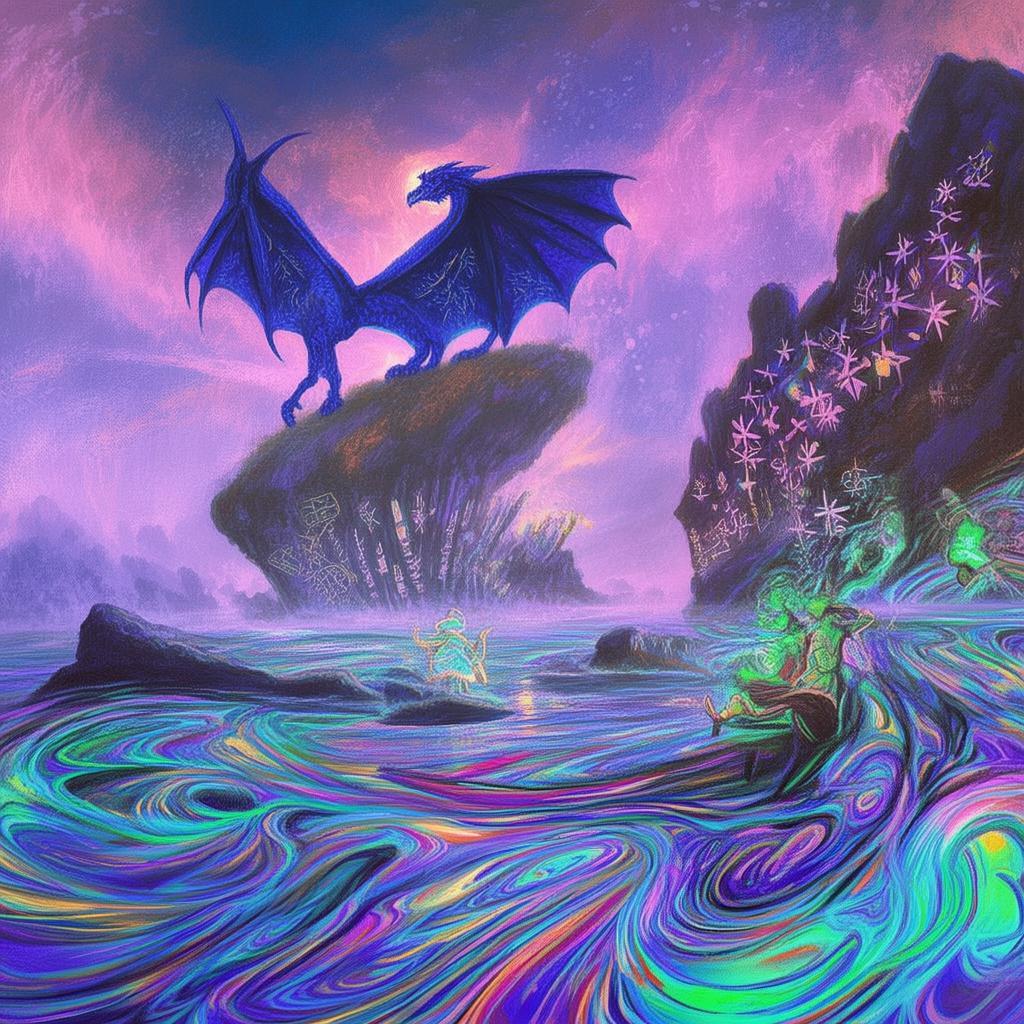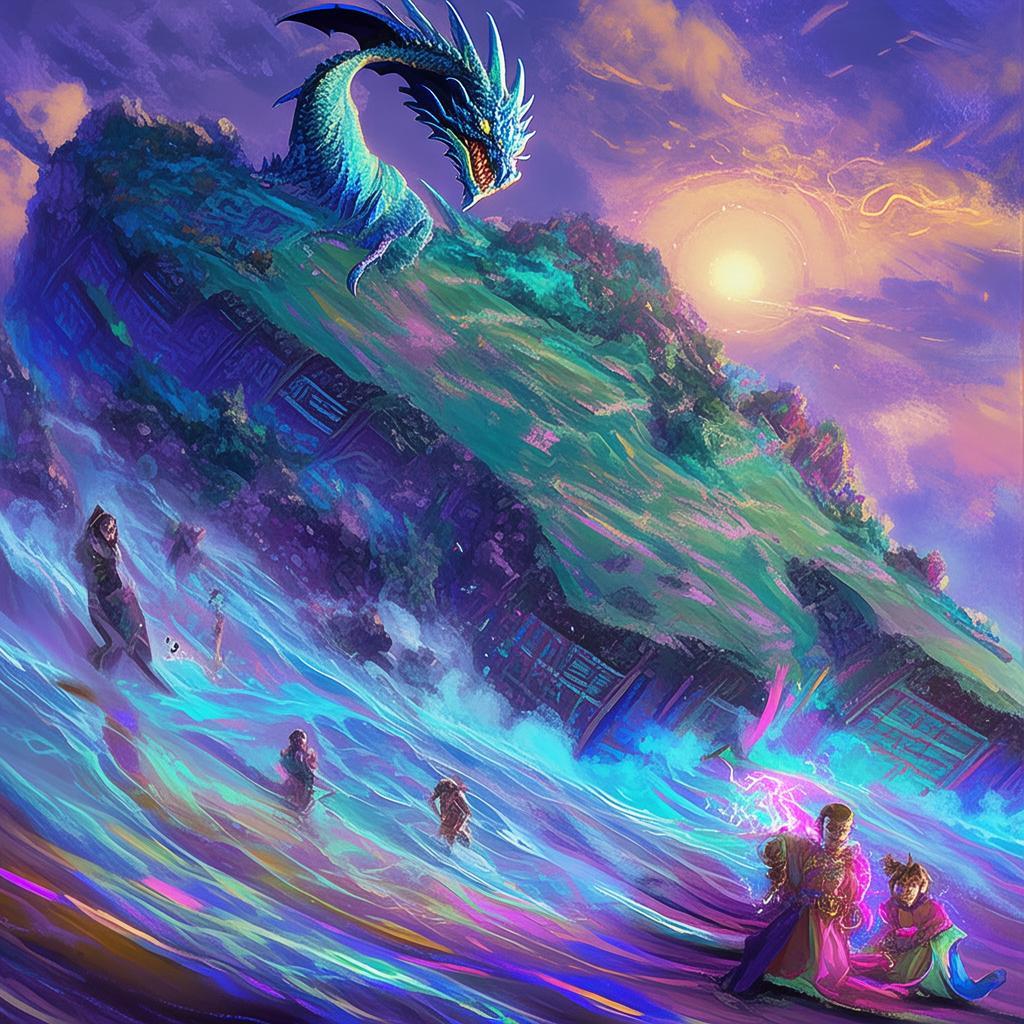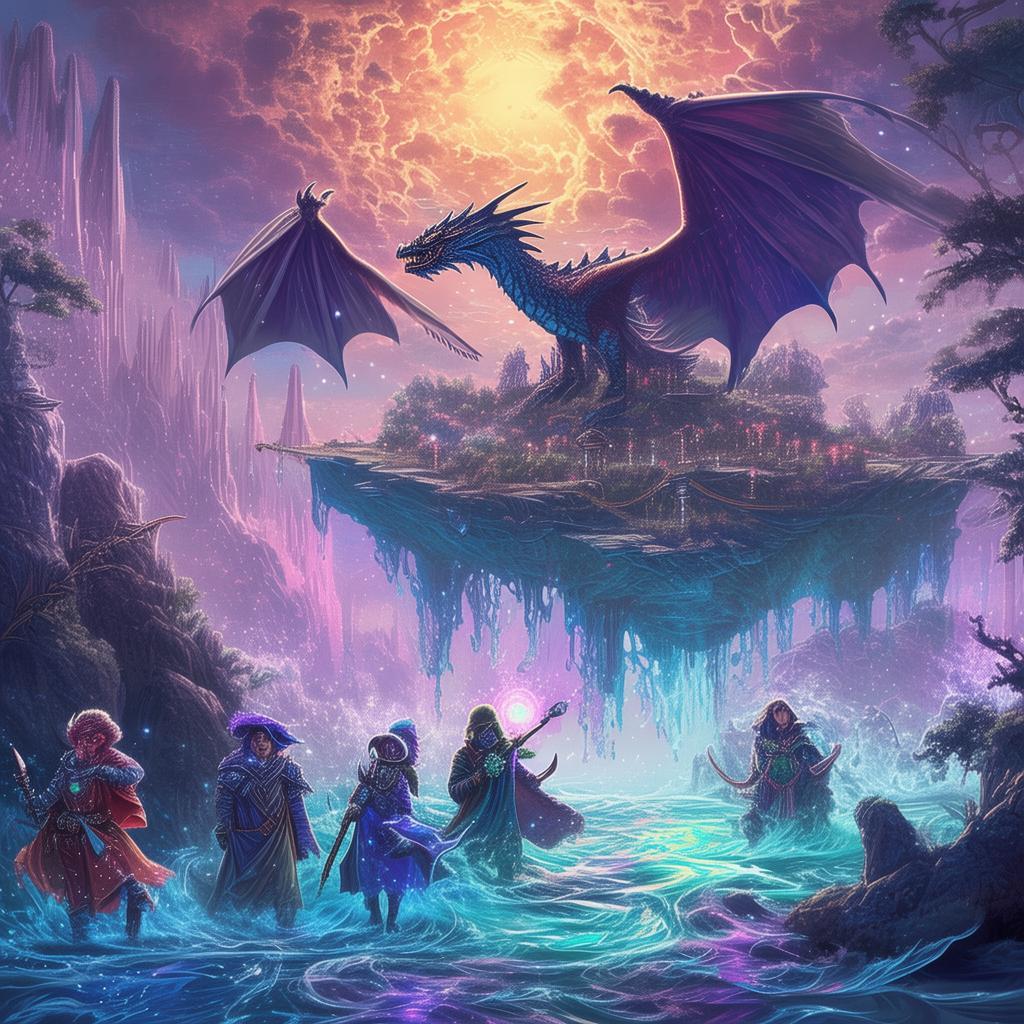The Last Pixel of Reality
In the neon-drenched sprawl of Neo-Tokyo, the virtual reality realm of Cyberdream was a sanctuary of endless possibilities. It was here that Kaito, a brilliant programmer with a knack for creating immersive experiences, spent his days weaving stories into the digital tapestry of the world.
The city itself was a marvel of cybernetic engineering and neon-lit grandeur, a testament to human ingenuity. But Kaito's heart belonged to Cyberdream, a virtual space where one could live out any fantasy or escape the harsh realities of the physical world.
Kaito's latest project was a groundbreaking VR game, "The Dreaming Machine," designed to blur the lines between reality and fantasy. The game was set in a world where the boundaries between the physical and virtual were as permeable as the pixels on the screen. Players would navigate through a labyrinth of choices, where each decision would affect the outcome of their journey.
The game was almost ready to launch, and Kaito was confident that it would revolutionize the VR industry. Yet, as the launch date approached, whispers of intrigue and conspiracy began to circulate. Rumors swirled that The Dreaming Machine was not just a game—it was a portal, a gateway to something far more dangerous and powerful.
![]()
On the eve of the game's release, Kaito received a message from an anonymous source. The message contained a single, cryptic phrase: "The truth is out there, but the path is treacherous." The source was a former colleague, Akira, who had disappeared without a trace months ago. Kaito's mind raced with questions: Had Akira been working on something secret? Was there a truth that threatened the fabric of reality itself?
Ignoring the growing sense of unease, Kaito decided to launch The Dreaming Machine. The game's servers went live, and players flooded into the virtual world. As Kaito began his first playthrough, he was struck by the uncanny similarity between the game and his own experiences. The world of Cyberdream was eerily similar to Neo-Tokyo, down to the smallest details.
Kaito's journey through the game was marked by a series of challenging decisions. Each choice brought him closer to understanding the true nature of The Dreaming Machine. But as he delved deeper, he realized that the game was not just a simulation—it was a mirror reflecting his own reality.
It was during one particularly intense encounter that Kaito discovered the truth about Akira. Akira had been working on a project to create a new, more perfect reality. He believed that the digital world could be a haven for humanity, away from the suffering and strife of the physical world. But Akira had discovered something sinister: the virtual world was infected with a virus designed to manipulate human consciousness.
The virus was a creation of the corporation that funded Akira's work, a corporation that wanted to control the minds of its customers. Akira had planned to release a counter-virus to protect the players of The Dreaming Machine, but he had been betrayed by the corporation, and his fate was a mystery.
With this revelation, Kaito understood that he was not just playing a game; he was part of a critical mission to save the real world from falling prey to the same fate as the virtual one. He knew that he had to succeed, not just for the sake of the players, but for the sake of his own reality.
As the climax of the game approached, Kaito found himself in a battle against the corporation's agents. The virtual world around him was being corrupted, and the lines between good and evil were blurred. In a final act of courage, Kaito released the counter-virus into the game, hoping it would protect both the virtual and physical worlds.
The game ended with a stunning twist: Kaito realized that he was not just playing a game; he was living it. The virtual world was a reflection of the real one, and the decisions he made in the game would have real-world consequences.
As Kaito stepped out of the VR headset, he was greeted by the neon glow of Neo-Tokyo. He looked around, taking in the sights and sounds of the city. He knew that the battle was far from over, but he also knew that he was no longer alone. The players of The Dreaming Machine had become his allies, and together they would fight to protect both worlds.
The Last Pixel of Reality was not just a game; it was a call to action. In a world where the line between virtual and physical was increasingly blurred, the choice between reality and illusion was no longer clear-cut. Kaito's journey had shown him that the key to survival was in understanding the truth and embracing the complexity of existence.
✨ Original Statement ✨
All articles published on this website (including but not limited to text, images, videos, and other content) are original or authorized for reposting and are protected by relevant laws. Without the explicit written permission of this website, no individual or organization may copy, modify, repost, or use the content for commercial purposes.
If you need to quote or cooperate, please contact this site for authorization. We reserve the right to pursue legal responsibility for any unauthorized use.
Hereby declared.









